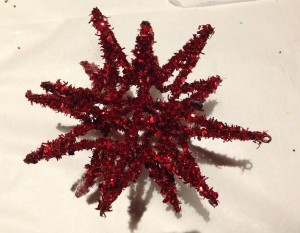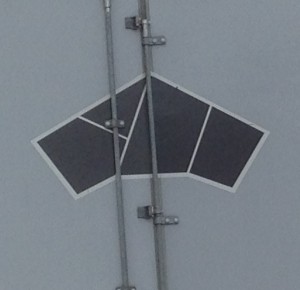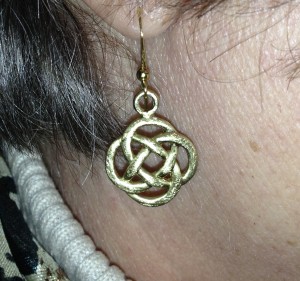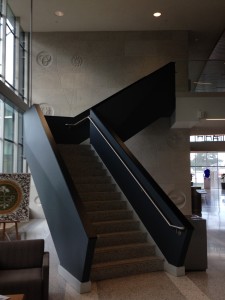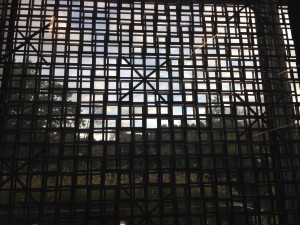A pair-of-pants is a surface that looks exactly like a pair-of-pants that you wear. Technically, it is topologically equivalent to a sphere which has been punctured three times, or a disk which had been punctured twice (shown below). It is an orientable surface of genus two having three boundary components. They are useful objects in topology, in that they give a different decomposition of surfaces.  We usually think of closed connected surfaces as spheres, where either handles or cross-caps have been added. More formally, recall the Classification of Surfaces Theorem: Any closed, connected surface is topologically equivalent to a sphere, a connected sum of tori, or a connected sum of projective planes.
We usually think of closed connected surfaces as spheres, where either handles or cross-caps have been added. More formally, recall the Classification of Surfaces Theorem: Any closed, connected surface is topologically equivalent to a sphere, a connected sum of tori, or a connected sum of projective planes.
It turns out that we can cut up just about any orientable closed surface into pairs of pants with simple closed curves. This is called a pants decomposition of a surface. Pants decompositions are not unique. For example, we can cut up a genus 2 surface (a sphere with two handles) in two different ways:
What happens in general? Suppose our surface has \(g\) handles, where \(g\geq 2\). Then we can slice the surface with \( 3g-3\) “vertical” simple closed curves, which decomposes the surface into \(2g-2\) pairs of pants. The genus 3 case is shown below and illustrates the general idea.
 Since a pair-of-pants is a subset of a thrice punctured sphere, it also admits a hyperbolic structure. Alternatively, simply construct a hyperbolic pair-of-pants by gluing together two right angled hexagons (hyperbolic) along alternate edges. More generally, it is relatively straightforward to show that there exists a unique hyperbolic pair of pants with cuff lengths \((l_1,l_2,l_3)\) , for any \(l_1,l_2,l_3>0\). Here, cuff lengths refers to the lengths of the three boundary components. Even more can be said about hyperbolic surfaces and pants decompositions, but this will lead us too far astray.
Since a pair-of-pants is a subset of a thrice punctured sphere, it also admits a hyperbolic structure. Alternatively, simply construct a hyperbolic pair-of-pants by gluing together two right angled hexagons (hyperbolic) along alternate edges. More generally, it is relatively straightforward to show that there exists a unique hyperbolic pair of pants with cuff lengths \((l_1,l_2,l_3)\) , for any \(l_1,l_2,l_3>0\). Here, cuff lengths refers to the lengths of the three boundary components. Even more can be said about hyperbolic surfaces and pants decompositions, but this will lead us too far astray.



